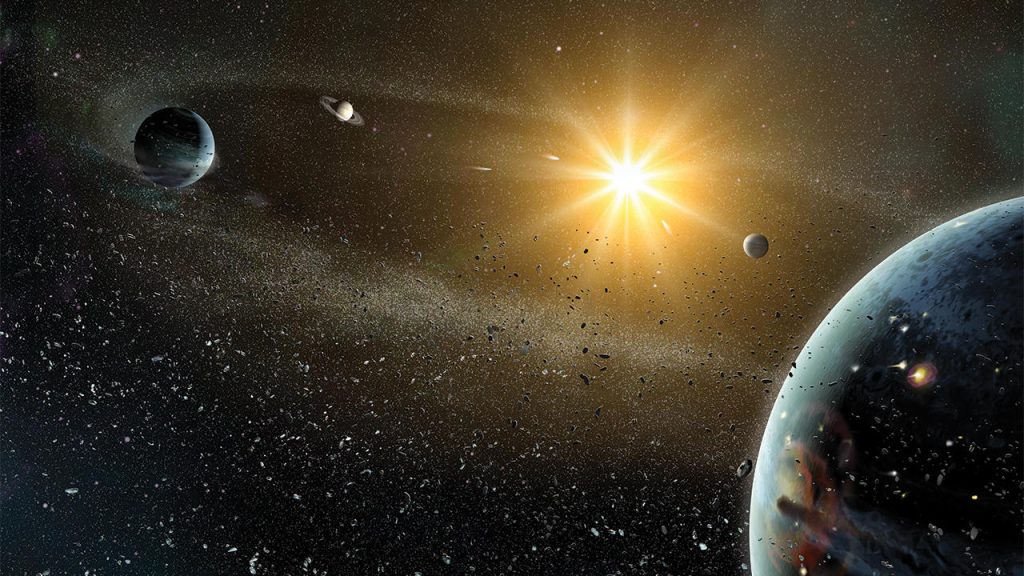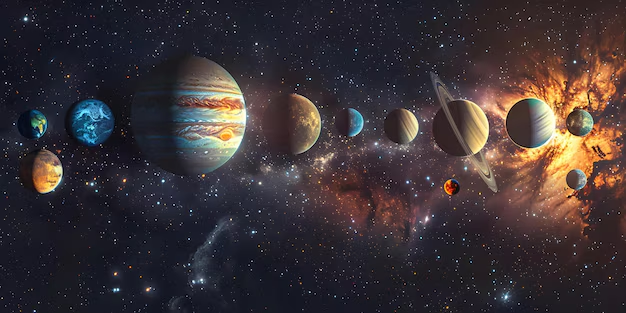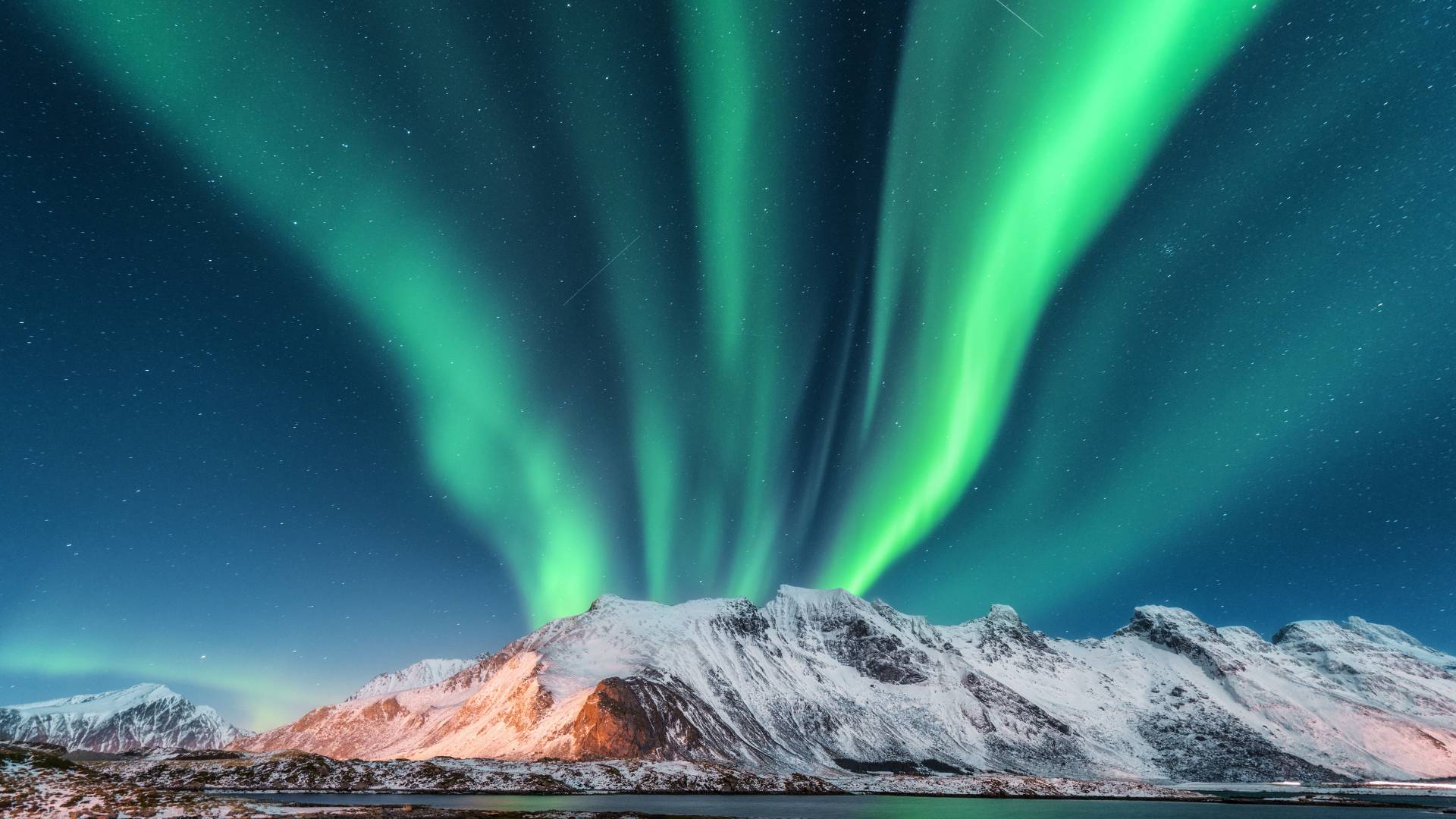Could life thrive in the crushing clouds of Jupiter? It’s a question that toes the line between science fiction and bold scientific inquiry. At spaceyv, we love exploring the boundaries of what’s possible in our universe, and few questions are as thrilling — or as bizarre — as the possibility of life inside gas giants. stay with Spaceyv
While most discussions of alien life revolve around rocky planets with liquid water, like Earth or Mars, researchers are starting to ask deeper and weirder questions: What if life doesn’t need a solid surface at all? What if it floats in the churning atmospheres of gas giants like Jupiter?
Understanding Gas Giants Like Jupiter
Before diving into the question of life, it’s important to understand what makes gas giants like Jupiter so unique. Jupiter, the largest planet in our solar system, is a massive ball of gas, primarily composed of hydrogen and helium. It has:
-
No solid surface like Earth or Mars
-
Immense pressure and gravity that increase as you go deeper into its atmosphere
-
Temperatures that vary wildly, from frigid in the upper atmosphere to scorching in the deep interior
-
A complex weather system with powerful storms, including the famous Great Red Spot
At first glance, Jupiter seems completely inhospitable. So why are scientists even considering the idea of life there?

The Case for Atmospheric Life
Astrobiologists have long hypothesized that life might not need solid ground — instead, it could exist in the upper layers of a planet’s atmosphere, where pressure and temperature might be within life-friendly ranges.
This idea isn’t entirely new. In 1976, Carl Sagan and Edwin Salpeter famously speculated about life in Jupiter’s atmosphere in a paper titled “Particles, Environments, and Possible Ecologies in the Jovian Atmosphere.” They imagined a whole ecosystem of airborne organisms:
-
Sinkers that fall deeper into the atmosphere
-
Floaters that use gas to maintain buoyancy, like balloon creatures
-
Hunters that prey on other floaters
It was speculative — yes — but based on real atmospheric data and inspired by terrestrial analogs like aerial plankton on Earth.
Could Life Withstand Jupiter’s Conditions?
To evaluate the possibility of life, we need to look at three core requirements:
1. Temperature and Pressure
While the core of Jupiter is unimaginably hot and pressurized, there is a “sweet spot” in the upper atmosphere where:
-
Temperatures range from 0°C to 40°C
-
Pressure is similar to Earth’s surface conditions
-
Water vapor, ammonia, and other organic molecules are present
This layer exists approximately 50 to 100 km below the cloud tops, and it’s where conditions may be most favorable for life — if it exists.
2. Energy Sources
Life needs energy to survive, and while sunlight fades as you move deeper into Jupiter’s atmosphere, there are still potential sources:
-
Solar radiation in the upper atmosphere
-
Chemical energy from the planet’s complex molecular soup
-
Lightning — Jupiter experiences massive electrical storms that could help fuel chemical reactions, just like the early Earth
3. Building Blocks of Life
NASA’s Galileo probe detected complex molecules in Jupiter’s atmosphere, including water, methane, ammonia, and hydrogen sulfide — all potential ingredients for life.
In addition, organic molecules like carbon chains have been observed, suggesting that prebiotic chemistry could be occurring naturally.

Analogies From Earth
The idea of airborne life isn’t as alien as it seems. On Earth, researchers have discovered entire ecosystems in clouds and high-altitude air currents, with bacteria, viruses, and fungi drifting for miles above the surface.
Some extremophiles on Earth also survive (and even thrive) in:
-
High-pressure environments (like deep ocean trenches)
-
Low temperatures (like polar ice caps)
-
Low-light, high-sulfur areas (like deep-sea vents)
These findings expand our view of what conditions life can endure — and suggest that life could evolve in very different ways elsewhere.
Challenges for Life in Gas Giants
Despite the intriguing possibilities, several challenges remain:
-
Turbulent Winds: Jupiter’s wind speeds reach over 300 mph, creating a chaotic environment. Could life remain stable in such turbulence?
-
Lack of Surface Anchoring: Without a surface, how would an ecosystem sustain itself?
-
Radiation Belts: Jupiter’s powerful magnetosphere emits intense radiation, which could be lethal to potential organisms.
Still, if life evolved under such conditions, it might be uniquely adapted to handle them.
Could We Ever Find Out?
NASA and other space agencies are developing missions that could someday explore Jupiter’s atmosphere more thoroughly. While current missions like Juno study Jupiter’s magnetic field and core, future concepts could include:
-
Aerial drones or balloon-based probes that hover in the life-friendly layers of the atmosphere
-
Sample-return missions to analyze gases and organic material
-
Spectroscopic studies from orbiters that look for biosignatures, like anomalous chemical patterns
The upcoming JUICE (JUpiter ICy moons Explorer) mission by ESA, launching in the 2030s, will focus on Jupiter’s moons — especially Europa — but it may also gather valuable data about the gas giant’s atmospheric dynamics.
Beyond Jupiter: Are Other Gas Giants Candidates?
If life is possible in Jupiter’s clouds, what about Saturn, Uranus, or Neptune?
Saturn’s atmosphere is similar to Jupiter’s, but its lower gravity and radiation levels might make it an even better candidate for aerial life.
On the exoplanet front, astronomers have already discovered gas giants in the habitable zone of other stars — “warm Jupiters” that could have conditions even more favorable than Jupiter itself.
Imagine life floating in the skies of distant alien worlds — not just a sci-fi dream, but a future scientific pursuit.

Conclusion: Is Life in Jupiter’s Atmosphere Science or Speculation?
The idea of life in gas giants remains highly speculative, but not impossible. From Earth’s cloud-dwelling microbes to theoretical floating ecosystems, there’s a scientific foundation for considering this bold idea.
At spaceyv, we believe that asking strange questions leads to extraordinary answers. Could there be living beings drifting silently through Jupiter’s endless clouds? It’s a question that invites imagination, grounded in real science — and it may one day be answered.
References
Sagan, C., & Salpeter, E. E. (1976). “Particles, Environments, and Possible Ecologies in the Jovian Atmosphere.” The Astrophysical Journal Supplement Series, 32, 737.
https://ui.adsabs.harvard.edu/abs/1976ApJS…32..737S
NASA Galileo Mission Overview.
https://solarsystem.nasa.gov/missions/galileo/overview/
Seager, S. (2013). “Exoplanet Atmospheres: Physical Processes.” Princeton University Press.
Lingam, M., & Loeb, A. (2019). “Subsurface Exolife.” International Journal of Astrobiology, 18(2), 112-141.
https://doi.org/10.1017/S1473550418000401
Smith, D. J. et al. (2012). “Microbial survival in the stratosphere and implications for global dispersal.” Astrobiology, 12(5), 451–460.
https://doi.org/10.1089/ast.2011.0736


